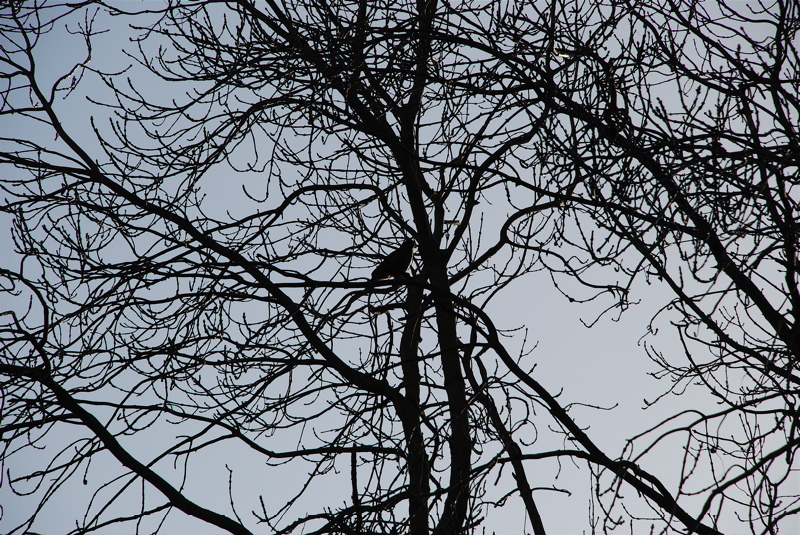
On Sunday morning I couldn’t sleep – I got up to watch the sunrise and decided to go for a walk after breakfast. I left the house before 9 o’clock and went very quietly down to the park. Tom told me on Friday that a buzzard roosts in the tree on the island – I’ve been living here for a year and this is the first time he’s shared that piece of information! I crept along and sure enough the bird was there. I took four photos, edging a bit closer, before it flew off down the valley. I tried to get another picture but there was no time, just an impression of a great spread of wings and pale bars/underside. It roosted again a few trees further on but when I approached it flew up into the lime avenue. I began to climb the slope, trying to keep a fix on it and to mark the shapes of the particular group of trees I was aiming for. It was cold out of the sunshine and I was aware of all the tiny beads of water on the clumps of grass. I was only about half-way up when it took off but I got a good view: it flew low down the valley and then rose into the trees at the top of the cliffs.
* * * * *
For the Ancient Egyptians, Horus was the god of the Sky, the east and the rising sun, a symbol of divine kingship and a protector of the ruling king. Mythologically, the god was imagined as a celestial falcon, whose right eye was the sun and left eye the moon. The speckled feathers of his breast may have been seen as the stars, while his wings created the wind. Like Odin the god was blind in one eye, though in this case the blindness was temporary and coincided with the dark of the moon.
* * * * *
HAWK
Morning’s messenger
I dealt swift death
Out of the sun’s eye.
Man’s hand translated me to darkness,
Bound me to silence.
* * * * *
Huge numbers of hawks were mummified at cult sites in Ancient Egypt: this poem is one of a series inspired by items on display in the World Cultures gallery of Exeter’s Royal Albert Memorial Museum. In his Greek form, Horus was known as Harpocrates and was the god of secrecy and silence.
Copyright Angela Williams 2000